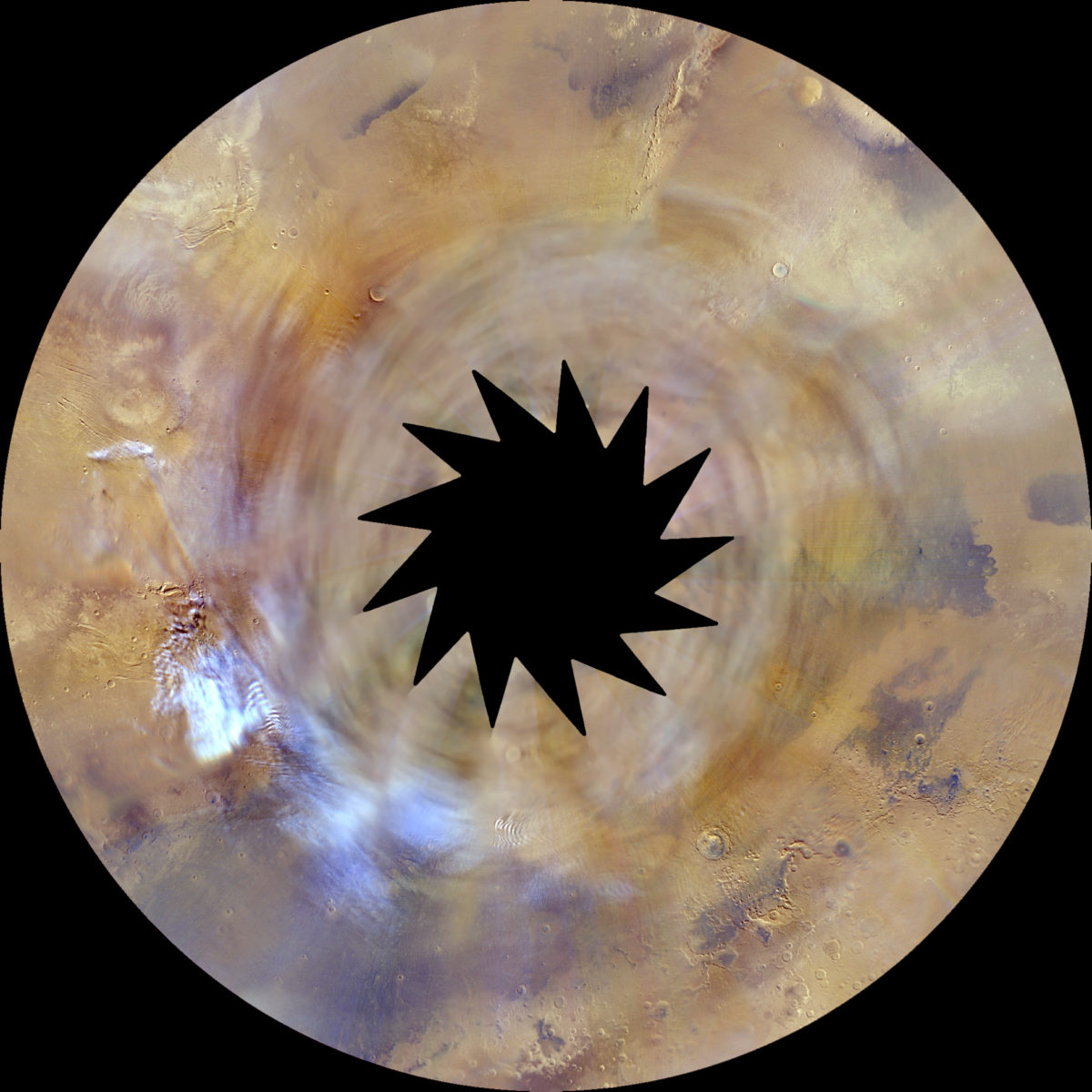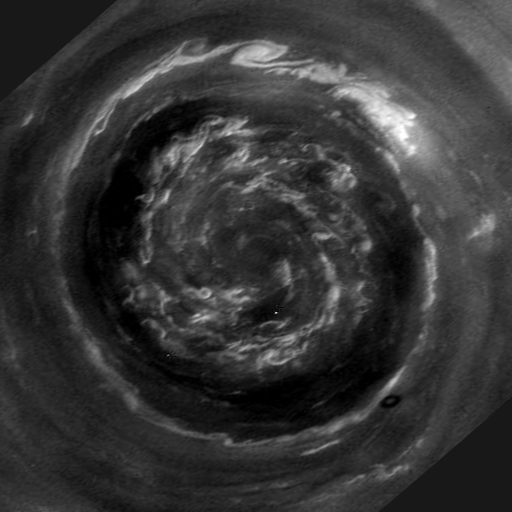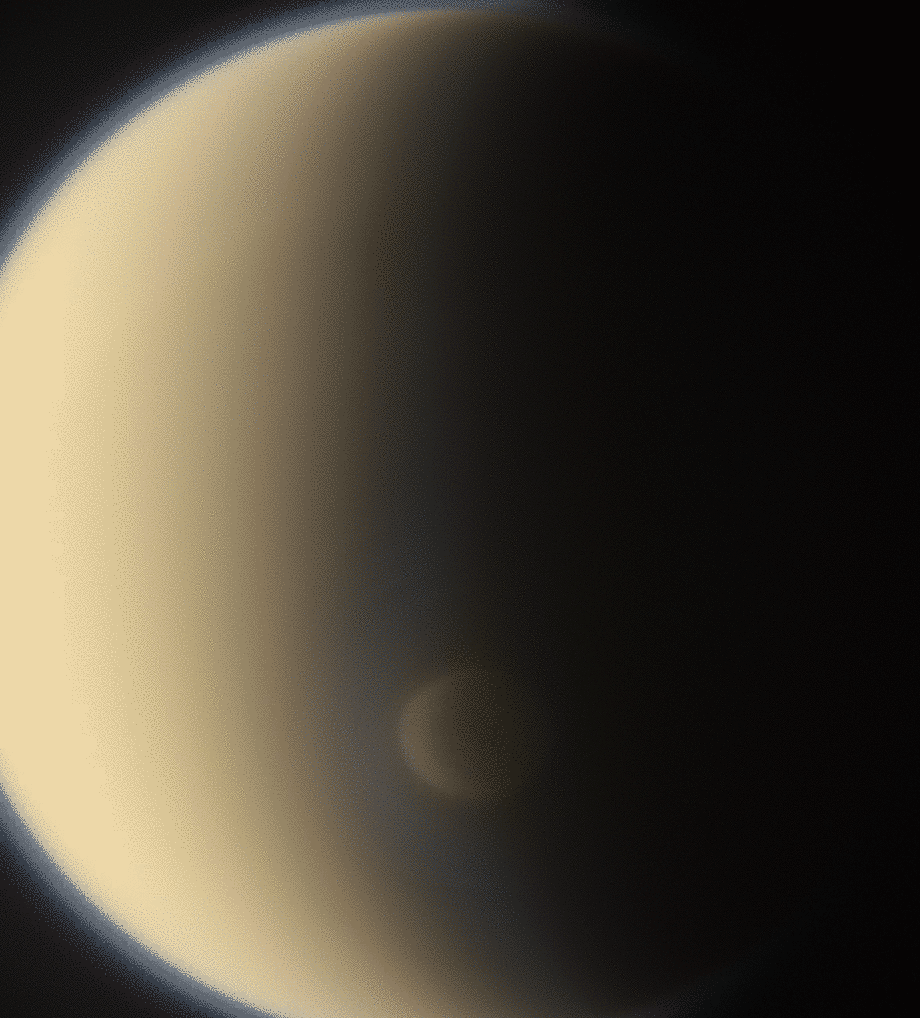Emily Lakdawalla • Jan 09, 2014
Polar vortices across the solar system
If you live in the U.S. you've heard a lot about the "polar vortex" that's making lives miserable for nearly everybody on the continent this week. (Everybody, that is, except for southern Californians. Ahem.) I guess a comment was made somewhere that the notion of a polar vortex was a recent invention -- I did not see that original comment, but I saw the response to it by all the atmospheric scientists I follow on Twitter. I was particularly amused by a retweet of television meteorologist Al Roker's response: he went to his bookshelf and pulled out the 1959 American Meteorological Society Glossary of Meteorology and showed that there was such a thing as a polar vortex being discussed even in those ancient times.
For all the doubters who say the media "created" the Polar Vortex: From the 1959 AMS Glossary of Meteorology pic.twitter.com/x2Nyw0jx3j
— Al Roker (@alroker) January 7, 2014If you can't read the text, it says:
polar vortex -- (Also called polar cyclone, polar low, circumpolar whirl.) The large-scale cyclonic circulation in the middle and upper troposphere centered generally in the polar regions. Specifically, the vortex has two centers in the mean, one near Baffin Island and another over northeast Siberia. The associated cyclonic wind system cromprises the westerlies of middle latitudes.
Now, I am not an atmospheric scientist. But one thing I have learned well about atmospheric science is that what happens in Earth's atmosphere, usually happens in other atmospheres. Indeed, there is a polar vortex in every atmosphere -- it's just what happens when there is an atmosphere over a spinning ball. So here's a little tour of polar vortices in the solar system.
Mercury has no atmosphere -- it has an "exosphere", which essentially means that although there are molecules moving about in the space above the solid surface, there are too few of them for collisions to take place. Without collisions, you have no wind, no circulation.
Next out is Venus. Venus has wonderful polar vortices -- in fact, there is usually a dipole, a double vortex at each pole. That's what Pioneer Venus saw, and it's also what Venus Express usually sees.

Sometimes, though, the vortex changes shape, becoming a single vortex, or other, more complex shapes. I wrote about this variety in 2010; here's one movie of Venus' polar vortex.
Venus' southern vortex A movie of the complicated swirling motions of Venus' south polar vortex as seen at a near-infrared wavelength of 3.8 microns, acquired by the Venus Express VIRTIS camera. The set of images show the temperature of the clouds' top. Darker regions correspond to higher temperature and thus lower altitude. The temperature contrast leads to an apparent three-dimensional effect of the images.Video: ESA / VIRTIS / INAF-IASF / Obs. de Paris-LESIA
The Moon, like Mercury, only has an exosphere. So the next circulating-air-world is Mars. Mars has a polar vortex, too. Here's one photo from Mars Express' VMC.

That's the best photo I could find in searching around the Internet, but I knew that there have been cameras at Mars to monitor its weather for decades, the wide-angle camera on Mars Global Surveyor and its successor, MARCI on Mars Reconnaissance Orbiter. But those data sets are not easy to use. Thankfully, MARCI scientist Bruce Cantor was able to help me out with this lovely image from MARCI of the Martian polar vortex. He was careful to point out that the vortex is not circular; it's oval-shaped. Just like on Venus!

The oval shape of Mars' north polar vortex is referred to as a "wave-2 type" structure. What does that mean? If you projected the photo I show above in a cylindrical projection, the north polar vortex would look like a wavy horizontal band, with two peaks and two valleys.
Moving outward, none of the asteroids retains an atmosphere, so next we go to the outer planets. I'm going to let just one planet stand in for all of them -- Saturn. I wrote at length about the cool shape of the north polar atmospheric circulation. Saturn's north polar vortex doesn't have a wave-2 type structure; it has a wave-6 type structure. That makes it look like a hexagon. Here's another old post, on how other integer wavenumber vortical structures have been made in the laboratory. But Cassini has recently revealed the action at the center of that hexagon -- a wonderful swirl-upon-swirl of storms.

And finally, there's Titan, which has developed a very interesting-looking south-polar vortex since the passage through equinox. Here's an animation that I hadn't seen before. In it, you can see that Titan's polar vortex has the same oval (wave-2) shape that Mars' does, except that it's much smaller. I'm really surprised by its fast motion; remember that Titan rotates at the same speed that it orbits Saturn, once every 16 days. The atmosphere moves much faster than the moon itself does.

Where else are there atmospheres in the solar system, apart from the other three giant planets? One notable type of atmosphere-bearing world I haven't mentioned yet lies in the Kuiper belt. Pluto has an atmosphere, and so does Neptune's moon Triton, for that matter. Will New Horizons see a polar vortex when it passes by next year? Maybe! I'm looking forward to finding out.
Support our core enterprises
Your support powers our mission to explore worlds, find life, and defend Earth. You make all the difference when you make a gift. Give today!
Donate

 Explore Worlds
Explore Worlds Find Life
Find Life Defend Earth
Defend Earth

